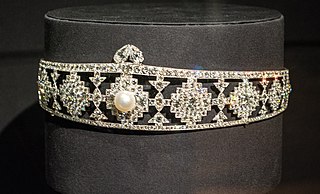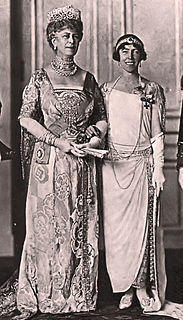 W
WA bandeau is a garment comprising, in appearance, a strip of cloth. Today, the term frequently refers to a garment that wraps around a woman's breasts. It is usually part of a bikini in sports or swimwear. It is similar to a tube top, but narrower. It is usually strapless, sleeveless, and off the shoulder. Bandeaux are commonly made from elastic material to stop them from slipping down, or are tied or pinned at the back or front. In the first half of the 20th century, a "bandeau" was a narrow band worn by women to bind the hair, or as part of a headdress.
 W
WA capirote is a Christian pointed hat of conical form that is used in Spain by members of a confraternity of penitents. It is part of the uniform of such brotherhoods including the Nazarenos and Fariseos during Easter observances and reenactments in some areas during Holy Week in Spain and its former colonies, though similar hoods are common in other Christian countries such as Italy. Capirote are worn by penitents so that attention is not drawn towards themselves as they repent, but instead to God.
 W
WA cilice, also known as a sackcloth, was originally a garment or undergarment made of coarse cloth or animal hair worn close to the skin. It is used by members of various Christian traditions as a self-imposed means of repentance and mortification of the flesh; as an instrument of penance, it is often worn during the Christian penitential season of Lent, especially on Ash Wednesday, Good Friday, and other Fridays of the Lenten season.
 W
WA coif is a close fitting cap worn by both men and women that covers the top, back, and sides of the head.
 W
WA cornette is a piece of female headwear. It is essentially a type of wimple consisting of a large, starched piece of white cloth that is folded upwards in such a way as to create the resemblance of horns on the wearer's head. It remained fashionable for some Parisian ladies around 1800, wearing ones made of muslin or gauze and richly ornamented with lace.
 W
WLadies' evening gloves are long gloves worn by women as formal wear, usually to a formal outfit such as an evening gown or wedding dress. Among them, the longest evening gloves are called "opera gloves". The "elbow-length or longer" part is the key; gloves which cover a substantial portion of the forearm, up to just below the elbow, can legitimately be called "long gloves" or "evening gloves", but never "Opera Gloves". In this instance the term "Opera" probably has more to do with the length than occasion, as is also seen in "Opera Length Gloves" and "Opera Length Pearls".
 W
WThe guimpe or chemisette was a garment which developed in medieval Western Europe. It was a silk or linen kerchief, sometimes sheer, sometimes starched, which covered the neck and shoulders of the wearer, sometimes the entire chest as well. It was worn as part of the garb of a woman of means, both to show social standing—due to the added upkeep it required—and to demonstrate the woman's sense of modesty. Among nuns it was worn in combination with a coif and wimple.
 W
WA mantilla is a traditional Spanish lace or silk veil or shawl worn over the head and shoulders, often over a high comb called a peineta, popular with women in Spain. It is also worn, without the peineta, by Eastern Orthodox women in Russia, often white, with the ends crossed over neck and draped over the opposite shoulder. The shape, design and use are different from an ordinary veil.
 W
WLe privilège du blanc (pronounced [lə pʁivilɛʒ dy blɑ̃] is a term used for a Catholic custom whereby certain designated royal women are permitted to wear a white dress and veil during audiences with the Pope, an exception to the tradition of women wearing black on such occasions. Those who have been permitted to wear white garments include the Queens of Belgium, Italy and Spain, the Grand Duchess of Luxembourg, and the Princess of Monaco.
 W
WSanbenito was a penitential garment that was used especially during the Spanish Inquisition. It was similar to a scapular, either yellow with red saltires for penitent heretics or black and decorated with devils and flames for impenitent heretics to wear at an auto da fé.
 W
WThe scapular is a Western Christian garment suspended from the shoulders. There are two types of scapulars, the monastic and devotional scapular, although both forms may simply be referred to as "scapular". As an object of popular piety, it serves to remind the wearers of their commitment to live a Christian life.
 W
WA veil is an article of clothing or hanging cloth that is intended to cover some part of the head or face, or an object of some significance. Veiling has a long history in European, Asian, and African societies. The practice has been prominent in different forms in Judaism, Christianity, and Islam. The practice of veiling is especially associated with women and sacred objects, though in some cultures it is men rather than women who are expected to wear a veil. Besides its enduring religious significance, veiling continues to play a role in some modern secular contexts, such as wedding customs.
 W
WA wimple is a medieval form of female headdress, formed of a large piece of cloth worn around the neck and chin, and covering the top of the head. Its use developed in early medieval Europe. At many stages of medieval Christian culture it was unseemly for a married woman to show her hair. A wimple might be elaborately starched, and creased and folded in prescribed ways, and later elaborated versions were supported on wire or wicker framing, such as the cornette.